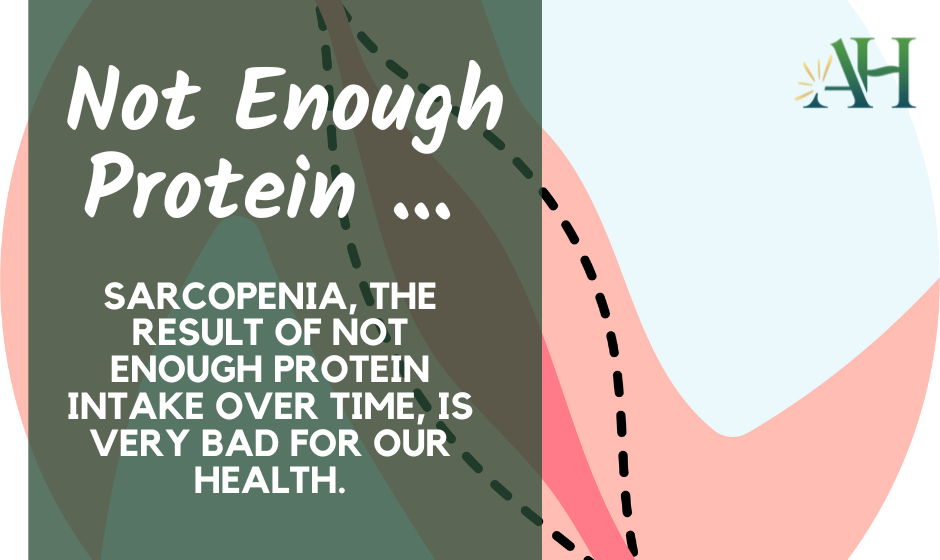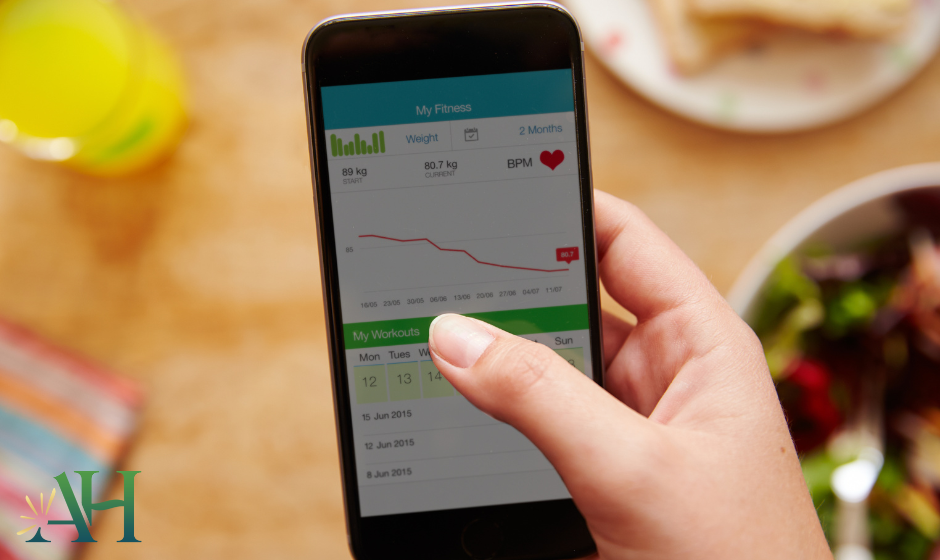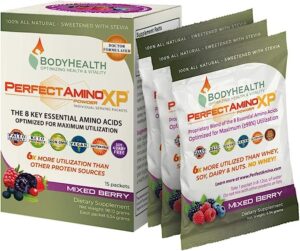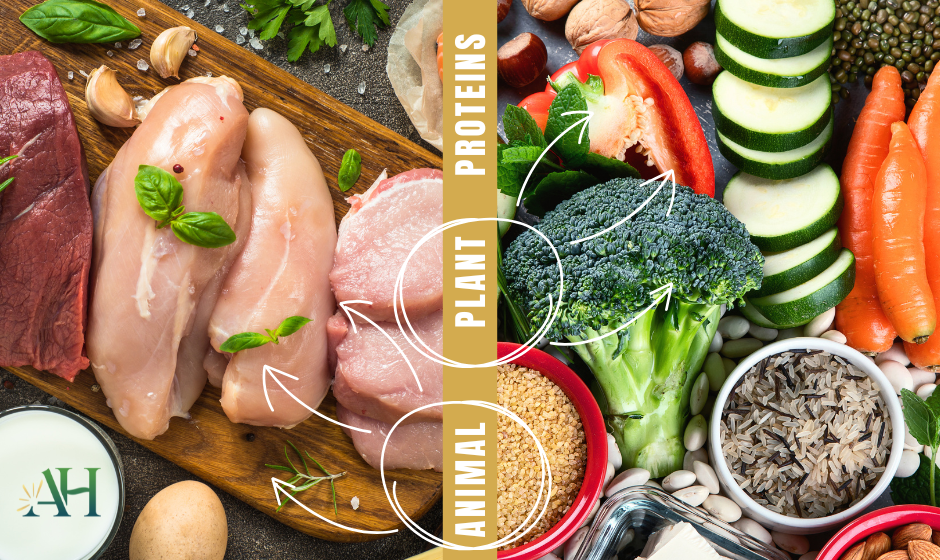Welcome back to our series on building muscle. If you missed the introductory post, please go back and check it out! Now that we know how important muscle is for our health, let’s delve into some details on protein.
How much protein should I have?
This is an age old question and rife with some controversy (just Google this question, you’ll see 1000 different answers!). I have even changed my opinion on this over the past few years, mostly due to my own experimentation, study, and learning from my patients. I will start off by saying that there is long-term downside to under consuming protein but very little downside to overconsuming. You have to eat WAY more protein than you think to cause kidney problems. There has also never been a study directly linking high protein intake to cancer other poor health outcomes.

The current recommended amount of protein in your diet (also called RDA) is 0.8g/kg bodyweight. If you’re 150lbs, this would be 54.4g of protein in a day. However, many recent studies have questioned this 0.8g/kg cut-off — it was based on old, imperfect, and out-dated techniques. Using more advanced techniques for measuring needs of the body, many are suggesting that the new protein range should be at a minimum of 1.2 g/kg bodyweight and increase with activity and age. My recommendation for most patients is to aim for 1.4 to 2 g/kg bodyweight. If you’re older than 50, really trying to build muscle, trying to lose weight, or are primarily vegetarian, I would shoot to the higher side of this range.
Example for a 150lb person:
0.8g/kg bodyweight = 54.4g of protein per day
1.2 g/kg bodyweight = 81.6g of protein per day
1.6 g/kg bodyweight = 108.8g of protein per day
2 g/kg bodyweight = 136g of protein per day
(Caveat: If you are obese and need to lose a lot of weight, we also have to keep in mind that more protein = more calories. I would not exceed 150g for women, 200g for men of protein per day for this reason.)

For many, we don’t have a good idea of how much protein we are currently consuming. Fortunately, protein intake is pretty easy to measure. You can use a variety of free apps (MyFitnessPal or Chronometer) to plug in your food and see how much protein you’re getting per day. To maintain sanity doing this, I’d only focus on plugging in your higher protein sources: meat, eggs, greek yogurt, tofu/tempeh, beans, lentils and not worry about adding up all the protein you got from broccoli (not a lot). You don’t have to be perfect — just use your number as a ballpark target. Some days you’ll be a little under, some days a little over. It all balances out. If you hate measuring, know that a serving size of most meat is the palm of your hand. Just look up how much protein is in a serving and use that to estimate your total per meal.
What are the best sources of protein?
Animal-Based Protein Sources:
- Chicken breast: 26 grams of protein per 3-ounce (85-gram) serving.
- Greek yogurt: 17 grams of protein per 6-ounce (170-gram) serving.
- Tuna: 22 grams of protein per 3-ounce (85-gram) serving.
- Eggs: 6 grams of protein per large egg.
- Lean beef: 23 grams of protein per 3-ounce (85-gram) serving.
Plant-Based Protein Sources:
- Lentils: 18 grams of protein per cooked cup (240 grams).
- Quinoa: 8 grams of protein per cooked cup (185 grams).
- Chickpeas: 15 grams of protein per cooked cup (164 grams).
- Tofu: 10 grams of protein per 3.5-ounce (100-gram) serving.
- Hemp seeds: 10 grams of protein per 3-tablespoon (30-gram) serving.
Of course, whey or plant-based protein powders are also a great choice. Look for products with minimal sugar content, around 25g of protein per serving, and around 120-150 calories per serving. I personally use Thorne Chocolate Whey (tastes like melted chocolate ice cream!).
Protein Timing
For most people reading this, we tend to have little protein in the morning and most of our protein at supper. Having protein in somewhat even distributions throughout the day is actually best for muscle building as well as maintaining appetite control.
There are two reasons for this:
- Overnight, our bodies are running on stored energy. Since we have really no way to store protein/amino acids, we are in a constant ‘need’ for protein. Let breakfast be that first large supply of protein for our muscles!
- Protein (specifically the amino acid Leucine) is the signal to start muscle growth. By not having enough protein in the mornings, we delay this signal from starting, missing out on the maximum benefit we could have had.
The best way to distribute protein across the day is to take your protein target number and divide it over four eating occasions. So if your your number is 100g per day, then you will need to consume 25g of protein at four separate meals. For most people, this will be 3 meals and a protein shake.
Lastly, there used to be this age-old rumor that you ‘must’ get your protein in immediately after exercising. Unless you’re trying to compete at the top 1% of a bodybuilding competition, do not worry about this. As long as you’re hitting your daily target, you will see results!
I hope this was a helpful review of protein and allows you to better estimate your protein goal for better muscle health. The next email will be on strength training.
 With this series, we are running a promotion on our line of Body Health Perfect Amino XP Powder! Do you need to increase your protein intake but either 1. Trying to cut calories or 2. Not hungry enough to eat more food? Perfect Aminos Powder is a great way to get you the 8 essential amino acids necessary to build muscle but delivered in an easy-to-drink, delicious strawberry flavored powder. Just mix 1 packet in water and get 5 grams of amino acids, equivalent to 30 grams of whey protein, for only 2 calories! Can’t beat that!
With this series, we are running a promotion on our line of Body Health Perfect Amino XP Powder! Do you need to increase your protein intake but either 1. Trying to cut calories or 2. Not hungry enough to eat more food? Perfect Aminos Powder is a great way to get you the 8 essential amino acids necessary to build muscle but delivered in an easy-to-drink, delicious strawberry flavored powder. Just mix 1 packet in water and get 5 grams of amino acids, equivalent to 30 grams of whey protein, for only 2 calories! Can’t beat that!
$21 for 15 packets (40% off retail price)
Come by the office to purchase or ask about it at your next doctor visit. Valid while supplies last!
















1 Comment